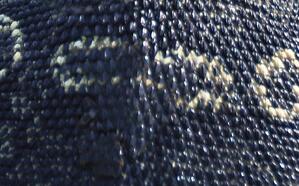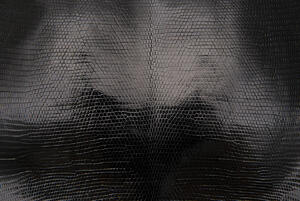 When making any exotic leather purchase, it is important to know why the skins you are ordering cost what they do. Knowing the factors that affect the prices of skins allows you to plan ahead for your exotic leather purchase so that you can get the most out of your order.
When making any exotic leather purchase, it is important to know why the skins you are ordering cost what they do. Knowing the factors that affect the prices of skins allows you to plan ahead for your exotic leather purchase so that you can get the most out of your order.
So, what are the factors that affect lizard skin prices? Why do the prices on these skins vary from time to time, and why do some finishes/colors cost more than others at all times?
To help you with these questions, we’ve assembled a short list of the biggest factors that affect the pricing of your lizard skin.
Size and Quality of the Skin
Our lizard skins come from two different animals: Varanus Salvator and Varanus Niloticus, otherwise known as the ring lizard and the Nile lizard, respectively. Both lizards are members of the monitor (Varanidae) family, and their skins are obtained primarily from wild sources in Southeast Asia and Africa.
 As a wild animal, these lizards are subjected to innumerable hazards that are beyond the control of the tannery. For example, water monitors sometimes prey upon dangerous animals such as snakes and young crocodiles, which can result in confrontations that damage the monitor’s hide.
As a wild animal, these lizards are subjected to innumerable hazards that are beyond the control of the tannery. For example, water monitors sometimes prey upon dangerous animals such as snakes and young crocodiles, which can result in confrontations that damage the monitor’s hide.
Because of the risks of damage to a lizard’s skin from natural and man-made hazards in their wild habitat, pristine grade 1 skins that are free of defects are more difficult to find than grade 2 skins that possess scuffs and other defects.
Larger skins tend to come from older lizards, which also means that these skins have been exposed to more potential sources of harm. This makes large grade 1 skins considerably more rare and expensive than small grade 2 skins.
So, when you are making an order, you may want to consider what the size of your panels are, and if you need large, pristine skins for your project. If the items you are making are small, such as watch bands or men’s wallets, you may be able to use smaller, grade 2 skins and work around any flaws.
Supply and Demand
 It’s one of the basic law of economics: The more commonly-available something is, and the fewer people that are demanding it, the lower the cost of that item will be. On the other hand, the rarer something is, and the more people want it, the more that item will cost.
It’s one of the basic law of economics: The more commonly-available something is, and the fewer people that are demanding it, the lower the cost of that item will be. On the other hand, the rarer something is, and the more people want it, the more that item will cost.
Remember the example of why large grade 1 skins cost more than smaller, grade 2 skins? That’s an example of supply and demand. Big, pristine skins are harder to come by, so they cost more.
Also, because lizard skin is collected from wild animals, the availability of the skins are subject to the effects of weather patterns and other external forces.
As for demand, when larger fashion houses make lizard skins a central part of their seasonal collections, they tend to buy up large amounts of skin, driving up the price. Typically, they are using large, top grade lizard skin.
Production Considerations
Once you’ve decided that the market conditions are right and that the time for your order is now, there are still other factors that will affect the price of your lizard skin order. These factors include:
- The size of your skin order.
- The finish you want.
- Who you buy from (tanneries, distributors, or manufacturers).
Whenever a tannery makes hides, there are certain costs that they incur whether you order 10 skins or 1,000 skins. If you order a very small number of skins, then the tannery will attach a surcharge to the order so that they can cover the chemical and labor expenses that they incur as a part of fulfilling that order. In short, the more skins that you order at once, the less that you will end up paying per skin. Note that distributors do not typically incur such charges for skins that they have in stock, so for smaller orders, a distributor may be your best option.
Beyond the quantity of your order, certain dye and finish combinations may cost you more than others because they add more steps to the process. For example, bleaching the skin to remove the natural patterns in the leather before dyeing it adds an extra chemical process and more labor, increasing the costs for the tanners. Simply dyeing the skin without bleaching reduces total labor and chemical use, which makes the product less expensive. However, it is important to note that in most cases, the dye and finish that you choose to use will have less of an impact on the final cost of your skin order than the quantity, size, and grade of the skins you order.
When you are looking for lizard skin for your own custom products and designs, keeping these pricing factors in mind can help you make sure that you get the best value out of your exotic skin order. If you want to know more about how we process lizard skin, or need help making your lizard skin order, contact us today! Pan American Leathers has years of experience with the tanning process and the industry, and we’re here to help you.



